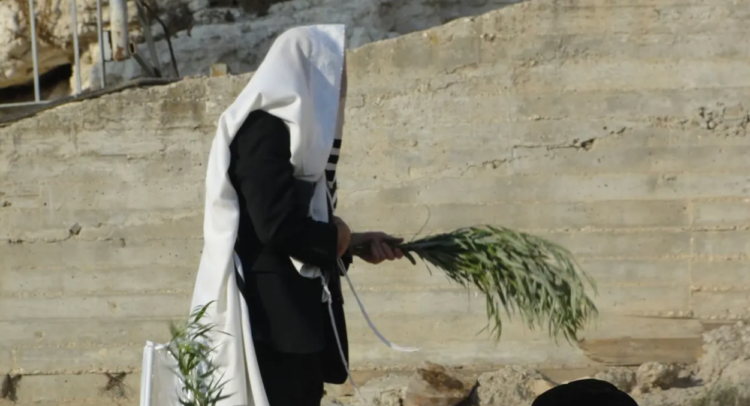Raboyseyee and Ladies:
Let us begin with a mazel tov shoutout – two actually- to our friends Dasi and Moti Weitz upon the arrival of twin baby boys born to their children Sara and Josh Daniels. In the words of King Solomon, two are better than one! A big mazel tov to the Chicago based grandparents, Judy (Nussbaum) and Michael Daniels. Of course, a very big mazel tov to great grandfather Mr. Isidor Weitz. May the twins -soon IM’h to be named be a source of nachas to the entire family.

We’re in the home stretch of the Yomim Toivim (Holidays) and by the time we return to our regular schedules this coming Monday -and while the heylige Ois and eishes chayil are in flight to Dubia and a few other countries- many of us will -during the holy month of Tishray which contains four Jewish holidays- consumed an overabundance of challah, kugil, herring, scotch, kichel and dessert. Our digestive systems are on the blink; system overload! Many -Ois among them- are already wearing stretchy pants, spanx and anything else in a desperate attempt to look epes a shtikel thinner than we really are.
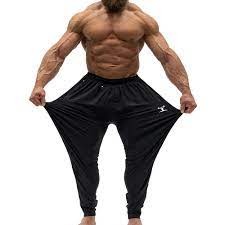
Some are mamish contemplating rigorous exercise regimens immediately after Yom Tov; a few are considering a trainer and gym membership. Most of us won’t follow up. Those who do, will soon thereafter drop out and revert to their normal lifestyles. Why? Because Yiddin love to eat challah, kugil and desert. Shoin, it’s a losing battle, azoy is iz (that’s just how it is). Soon we’ll be invited to weddings, a bris, a dinner, a parlor meeting and or an engagement party; what’s a party without food? We never forget attending parties where nothing -or next to nothing- is served. What? You made me get dressed and schlepp over for dessert only? Dessert comes after food! Chutzpah!
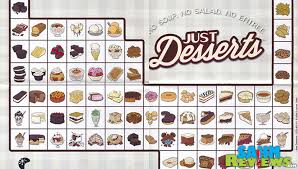
Ober before we get to enjoy the next four to six meals and enjoy the Yom Tov known as Shmini Atzeres, a holiday not found anywhere in the heylige Toirah, the very one we argue over yearly with our closest friends, we must first get through Hoishana Rabba. As well, in the paragraphs below, we will take yet another look into Shmini Atzeres and lay out the positions. Is it part of Sukkis or not?
What is a Hoishana Rabba and how do we mark this day? Nu, lommer chazerin (let’s review) a few victhiger (important) highlights of this day which at first glance seems to have epes more in common with sado-masochistic acts that many of you either read about or experienced chas v’sholom (heaven forbid).
Wake up, smell the coffee and welcome to Hoishana Rabba, efsher a day as critical as Yom Kippur itself. The RBSO might or might not make a last-minute change to your status and banging the hoishana may just play a role. Avada we all chap that it was banging that may have caused you to be in this pickle altogether, ober it epes appears that the RBSO will allow us to use a different sort of klapping to efsher escape a potentially harsh sentence. Ober, vi-azoy (just how)? We are taught that Hoishana Rabba is the last chance we have to somehow appease the RBSO. Though not mentioned in the heylige Toirah by name, it appears that many generations back, some rabbis decided that we needed one last day and one opportunity to ask the RBSO for forgiveness before sentences decreed on Yom Kippur would be executed. In other words: our good rabbis got us an extension, and we have one last chance to have the RBSO tear up the decree. After beating our chests kimat 500 times on Yom Kippur, on this day, we get to bang one more time. Givaldig! Can banging an innocent Hoishana (willow) save your life? Lommer lernin epes (learn something) about this special day we call Hoishana Rabba.
Shoin, after exhaustive research the heylige Ois found some explanation in the writing of Eliyahu Zuta who said azoy: the beating of the hoshanis causes the leaves to fall away and this act symbolizes “the falling away of the sparks of Divine Judgment. And on Hoishana Rabba, as we will address mamish below, we are attempting to cast away any negative judgment. How does all this work, ver veyst? And who said that hoishanis –willow branches– symbolize Divine Judgment? And how do we have the chutzpah to throw Divine judgment away? Nu, lommer lernin (let’s learn).
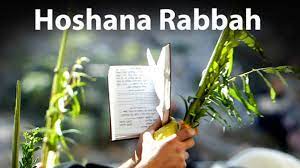
Seemingly -even back then- our sages realized how poorly behaved the Yiddin of their generations were and decided to take action. They chapped that although Yom Kippur was the date that the RBSO sealed the fate of all mankind, they decided that the Yiddin needed an extension. Shoin and just like that, they created Hoishana Rabba and told us that on this day and up until this day, despite Yom Kippur having passed more than 10 days earlier, we Yiddin can still somehow unseal the RBSO’s decree and have it re-written. We can? We can mamish unseal the RBSO’s decrees? How is that possible?
Nu, to chap this concept, we need to borrow a metaphor from our dentist friends and imagine that you are getting a crown installed or a replacement tooth, ver veyst. Initially the dentist will mistama install a crown with a sealant material, ober will refer to the tooth and the sealant as temporary. Weeks later, he will install the permanent with everlasting sealant. Shoin, now you can chap. Seemingly the sages were able to convince the RBSO to only use temporary sealant materials on His Yom Kippur decrees and hold off on the final sealant until Hoishana Rabba. And therefore raboyseyeye, you have mamish until tomorrow to make final amends with the RBSO. You can still perform the Tashlich ceremony and try ridding yourself of your sins that way and of course you can bang away at the Hoishanis hoping that might work. Is any of this true, ver veyst? Or, are we efsher klapping Hoishanis tomorrow in vain or more likely for the myriad avayris you committed since Yom Kippur? The latter of course, the more likely scenario.
In any event, since its inception, Hoishana Rabba, technically the 7th day of Sukkis, has elements of a regular intermediate Sukkis day + sprinkles of Yom Kippur and the davening too is a combination of weekday, shabbis, Yom Tov. And to top it all off, it includes the hoishanis beating. When it’s all over, if you said at least half the words – no small challenge- you might have a shot, albeit a very long one, of having the RBSO soften up and change any negative decree coming your way, into something more manageable.
Ober listen to this. Says the heylige Zoihar (Tzav 31b) azoy: Hoishana Rabbah is a judgment day akin to Yom Kippur. For on Hoishana Rabbah the parchments containing the Yom Kippur decrees are made final. The Mystics state that whereas our fate was sealed on Yom Kippur, the writ containing the decision of the Court on High is only rubber-stamped – think permanent sealer-on the seventh day of Sukkis which is Hoishana Rabbah. Hence, until this day, a last-minute appeal to the Heavenly Supreme Court may carry some weight by virtue of extenuating circumstances. Those circumstances being that you put off repentance until the last minute, minuvil that you are.
And more good news: Good and decent people were previously judged on Rosh Hashanah. In fact, so were all others, ober it appears, according to our wise rabbis, that those people not totally shlecht (evil), were extended until Yom Kippur to repent. If they failed to do so, the verdict against them was written and sealed, but not yet delivered. That will be done tomorrow and instead of chapping as you usually do, chap areyn some last minute tshuva; efsher you can still be saved, ver veyst?
And taka says the Medrish (sorry cannot find original source) that the RBSO said to Avrohom Ovenu azoy: “I will give your descendants a special day for forgiveness: If they are not forgiven on Rosh Hashona, then let them try repenting on Yom Kippur. If not, they will have until Hoishana Rabbah.”
On Hoishana Rabba, we grab five tightly wound willows and perform some sadistic act, one that many of my early Rebbes practiced all year with wood, sometimes their own, if you chap. On this day we pay but $5-10 dollars for the thrill; during the year this experience can run $150 for a 30-minute session.
First the facts:
1-Hoishana Rabbah is the seventh and last day of Sukkis. Is that emes? Not according to all, and soon, space permitting, we’ll check in on this machloikes (argument).
2- There is no mention of this day in the heylige Toirah.
3- Hoishana Rabbah is known as the day of the final sealing of judgment which began on Rosh Hashono: Hoishanna Rabbah is somewhat similar to Yom Kippur.
4 – Hoishana Rabbah is one of the most interesting and lofty days of the year. On one hand it is a regular weekday, part of chol hamoed (intermediate days) of Sukkis. On the other hand, it’s a Holiday unto itself. The bottom line: it’s an extension of chol hamoed; we get an extra day to do whatever.
5- It has its sources in the traditions of the prophets.
Where did it come from, who invented it and decided to add it to our calendar? Says the heylige Mishnah (Sukkah 4:5): the custom, way back in the days of the Beis Hamikdash (Temple), was to circle the Mizbayach with large willow branches, one time on each day of Sukkis and seven times on the seventh day. So too we circle the Bimah reciting Hoishanis once daily during each day of Sukkis and seven Hoishanos on the Seventh day. It’s mashma (appears) that Hoishana Rabba is aptly named because more hoishanis (Hosannas) are recited on this day than all the previous days of the holiday. Shoin. On this day, instead of one clumsy attempt at circling the bimah, while holding our lulavim and esrogim in one hand and juggling awkwardly the siddur in the other, we do this seven times.
The highlight of the morning is the klapping (banging) of the Hoishanis, a custom that even the veyber and kinderlach (women and children) perform; seemingly a good hoishana bang is enjoyed by all, if you chap.
Exactly how beating hoishanis into submission seemingly atones for our sins, ver veyst? And to no one’s surprise, there are at least four opinions on specifically when one should klap his/her hoishana. Seemingly, when it comes to Hoishana klapping -as is mistama the case with other klapping- if you chap, timing is a most critical issue.
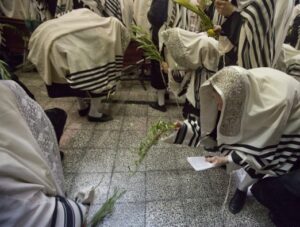
Some bang immediately before the final Kaddish, some in the middle of Kaddish before Tiskabel, and some after the end of Kaddish, which was the Minhag of the Arizal and is quoted by the Baer Haitiv. Those who want special consideration, begin the banging the night before, if you chap. Oisvorfs klapp away whenever the opportunity presents.
How much banging is in order? Nu, again this depends on who you ask but here the most popular: Some say that one is to bang two or three times, on the floor or on vessels. Not bad for $5, if you chap. Says the Arizal: we are to bang specifically on the floor five times. This signifies that we are ‘burying’ the judgment. And, says the Ben Ish Chai: the banging surface must be specifically unpaved, virgin earth. Seemingly virgin earth is better, if you chap. Not all agree, and there appears to be some advantage to banging on vessels for they cause the leaves to fall off, which symbolizes shredding of the disastrous decrees. Says the Pri Migodim and the Mishna Berura: banging should follow the Arizal’s recommendation: one should bang to the floor and to continue banging on vessels until some of the leaves fall off. Too much banging is avada not recommended and, says the Chaya Odom: continuous banging until all the leaves fall off is childish gleeful play.
Having vented our frustrations on the poor willows and having performed what appears to be an ancient sadomasochistic act with hoishanis now behind us, we feel mamish givaldig. And in a last strange custom the heylige Ois never chapped, instead of discarding the Hoishanis as we do with other things we just klapped, we throw the beaten Arovois (5 willows tied together) on top of the Oron Koidesh which houses the heylige Toira(s). Does all this make sense? Ver veyst?
As Hoishana Rabba comes to an end, the Yom tov of Shimi Atzeres begins, and because many of you already forgot what the Ois wrote in previous postings about these last two days of the extended Succos holiday, here then is a shtikel chazora (review).
Is Shmini Atzeres the 8th day of Sukkis? Or, is it a standalone holiday? Does shmini mean eight as its name seems to imply? If yes, maybe it’s not Sukkis! Shoin, fartig ge-endicked de mayseh (period, end of story). Moreover, we all know that Sukkis is but seven days. Or, can we klerr (posit) that even though it’s taka the 8th day, it’s still somehow Sukkis and we must follow the Sukkis rules. Le’my nafka mino (what’s the difference?) Either way, it’s Yom Tov, either way we’re back in Shul. And either way, just in case you’re still hungry or haven’t gained enough weight in the first days, we get to enjoy two more days of challah, kugil and of course for those who enjoy the l’echaim, plenty of scotch and other fine spirits: Gevald (OMG)!!
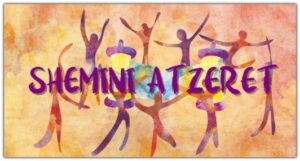
Here in golus (the Diaspora) we begin the Yom Tov with Shmini Atzeres and of course we argue and discuss with each other as to what it is. Is it a separate holiday or is it Sukkis? Do we eat in the Sukkah or indoors? As expected, the Chag Somayach and the Sukkis Dovid Hanoifeles (both mythical figures) exploded over this issue in a famous machloikes (discussion where people argue loudly and with emotion.) The Chag Somayach stated emphatically that of course it’s Sukkis, while the Sukkis Dovid Hanoifeles says farkert (opposite.) Do we accept invitations if our minhag (custom) is to eat outdoors but your host holds farkert? The Goan states that if a person whose minhag it is to eat in the house invites a family for a meal whose minhag is eat in the sukkah and causes chas v’sholom (heaven forbid) that person to be nichshol (violate the law)- well- that person deserves malkus (lashes) –some say with the hoishanis mamish. Some say that he has to immediately present himself at a club specializing in this technique, if you chap. Others say, that he can -b’shas hadchak- (if the club is closed,) allow his 5th grade yeshiva rebbe, or in case of an emergency, any other perv to administer them. Is it or isn’t it Sukkis?
What’s the maskona (conclusion?) Where do we eat our meals both tomorrow night and shabbis? Though this question has been hashed out -hundreds of times and over thousands of years- the same people ask the same questions and argue their position as if they’ve discovered some new concept in halocho. The bottom line: These last two days are mired in controversy.
As we prepare for the most joyous of days, and what could be more joyous than the completion of yet another cycle of the heylige Toirah, a time we call זמן שמחתנו, “time of our happiness”, the Ois began to klerr more about this strange holiday which also adds a touch of Yom Kippur into the mix.
According to most opinions, the Shmini Atzeres Yom Tov meals must be eaten in the Sukkah but we don’t make the brocho of layshaiv b’sukkah. Some say that indeed we must eat in the Sukkah but we may be lenient and use a plastic tablecloth and paper dishes. Some are even more lenient and suggest that the eishes chayil may wear a hat instead of a full sheitel though others argue that the hat must have hair already attached. Others add that the eishes chayil may wear her pundula (house-robe) in the Succah but only on the last day. Others only allow this leniency if all the children of marriageable age are already married. Some say, that if the kids are engaged or at least dating seriously, this heter (leniency) can also be relied on. Others say that under no conditions may one use plastic if the Succah has a window and a neighbor can see in, even from afar. Some have the custom to be lenient on Shmini Atzeres and eat some or all of the Yom Tov meals in the house. Is this clear or what? One thing is zicher: Moishe Rabaynu is laughing uncontrollably ober not to worry: Moshiach is coming one day soon, maybe taka on the eighth day, ver veyst.
On the other hand: The Toirah says “You shall dwell in booths for seven days, every citizen of Israel shall dwell in booths —–“(Leviticus 23:42-43). The last the Ois counted, seven was still seven; when did seven become eight? Furthermore, the heylige Gemora (Rosh Hashono 4b) mentions that Shmini Atzeres is a separate holiday unto itself in respect to six specific halachic issues. Moreover, the heylige Gemora (Taanis 20b-31a) declares, “The eighth day is a festival in its own right.” There is of course a machloikes amongst the commentaries regarding what those six issues are, what else is new?
The bottom lines: Halt kup (pay attention), here are the differences between Sukkis and Shmini Atzeres. First: there is no more shokeling of the lulav and esrog and as far as the Ois is concerned, if one cannot grab and caress his esrog and shokel the lulav, well, it’s just not Sukkis. Ober argues the Oichaze B’yad that whenever we do grab and caresses, it’s taka a Yom Tov, if you chap, especially if a shokel is included somewhere. Second: although some of us have our meals and recite Kiddush in the Sukkah we no longer say the brocho to dwell in it. Nu, you tell me: if one cannot make a brocho of leshev b’sukkah, is it still Sukkis? And if it’s not Sukkis, then one can eat, sleep, shokel, grab and caress indoors. Gishmak mamish!
And while we’re arguing about whether or not we do or don’t eat, make a brocho or not and other such important matters, over in the holy land, they’re having an entirely different sort of argument: On street corners of Yirusholayim and in the lobbies of all the major hotels, stuffed like kishka (derma) with American and other tourists, – they’re getting into fisticuffs about whether the Americans and Europeans need to hold one or two days of Yom Tov- oy vey!
The heylige Ois never quite understood this machloikes. To his thinking, it’s quite a simple issue. One can pick and choose and there are plenty of Rabbis, young and old, dead and alive, who agree with any position you pick. Says the Ois: You’re on safe ground if you hold one or two days- you’re an apikores mamish of the highest order if you elect to hold either zero or three days. Case closed! In any event- this Yom Tov- whether you hold seven or eight days and whether you hold one or two days over in the holy land, is all about machloikes and likely money. If you hold one day in Israel, you can of course check out one day earlier and come home with a few shekels in your pocket so that you can pay the mortgage on your house. On the other hand, if you check out and leave Israel one day early, you’ll get home just in time to keep the second day here- yikes! If you hold eight days here, you have to endure a scrappy beard and your shviger (mother-in-law) in the house for a few more days. So happens that the Ois’s in-laws- always welcome- have the Tishrei package. Is it any wonder that we orthodox are a confused bunch?
Is this what the RBSO had in mind? Maybe it was! Efsher the RBSO wanted us to argue and discuss these issues. Maybe He taka wanted us to engage each other in heylige debates versus stam reydt (regular BS). Efsher He was klerring that such talk would cut down on loshoin horo, richilus. Did it work? Seemingly not!
A gittin Shabbis, Yom Tov and Chag Somayach!
The Heylige Oisvorfer Ruv
Yitz Grossman
